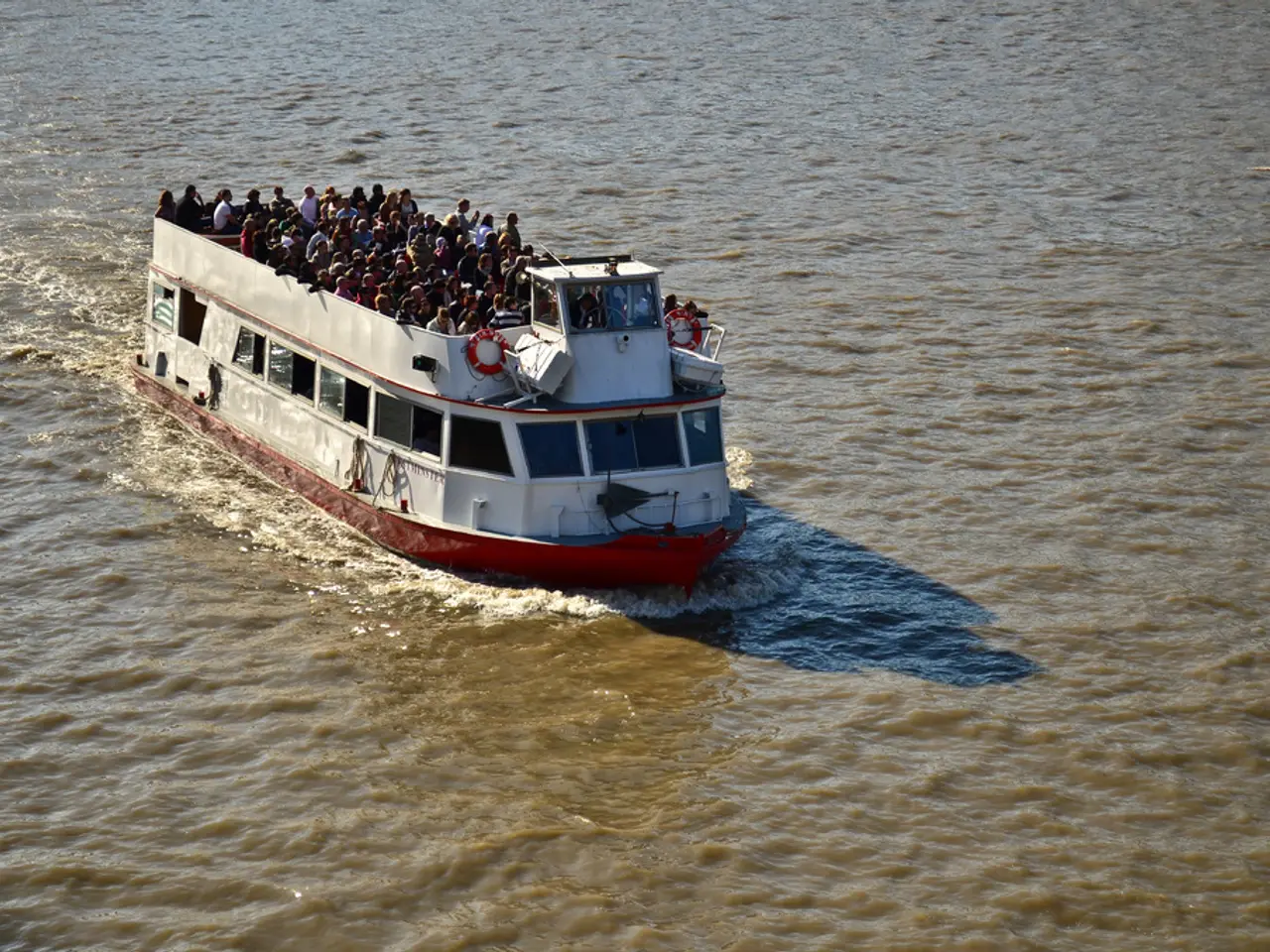Limits imposition: Only one large cruise ship will be allowed in Cannes bay daily by 2026
Headline: Cannes Limits Mega Cruise Ships to Preserve Bay's Beauty
Sub-Title: The French Riviera City Takes Steps to Reduce Environmental Impact
It's adiós to endless hordes of tourists disembarking from giant cruise liners as the glamorous city of Cannes, nestled on the sun-drenched French Riviera, steps up its game to preserve its magnificent bay. The city has decided to restrict the number of large cruise ships docking from 2026, with only one such vessel carrying more than 3,000 passengers allowed each day, and the ultimate no-no – never two at the same time.
In an effort to tackle the environmental consequences and overcrowding, the municipality has taken action by entering into a contractual agreement with the company in charge of managing the cruise terminal. The contract, unanimously approved at the municipal council, limits the number of visits from large carriers by almost 50%, making way for about 34 calls in 2026 and 31 in 2027. The daily reception capacity will also be capped at 6,000 passengers.
The intention is to establish a positive environmental trajectory, with a goal to welcome only ships with a maximum capacity of just 1,300 passengers by 2030.
David Lisnard, the Republican Mayor of Cannes, explains, “It's not about being against cruises, but rather about welcoming smaller, more aesthetic, modern and eco-friendly vessels in the long term”. Frustrated by ten years of failed attempts to acquire increased environmental policing powers from the government, the mayor deplores the current limitations but acknowledges the steps being taken toward a better future.
The Cruise Lines International Association (CLIA), the industry's representative association, has expressed disappointment over the decision, viewing it as imposing “unjustified restrictions on an industry that allows millions of people to discover the world while actively contributing to the vitality of port cities.”
Over the years, Cannes has become a popular destination for these floating cities, with 175 calls and 460,000 passengers in 2024, and sometimes hosts ships carrying more than 5,000 passengers. The city imposed an environmental charter on companies in 2019, threatening to block passenger excursions if they didn't comply.
Neighboring Nice, another popular Mediterranean destination with a long, beautiful bay, has also delved into the issue of managing large cruise ship traffic, ultimately changing its initial plan to outright ban ships over 900 passengers. Instead, the city decided to allow 65 calls each year, but only one ship at a time, with further discussions to determine size limitations. Meanwhile, smaller ships carrying fewer than 450 passengers will be the only ones permitted to dock in the port of Nice.
As the debate about large cruise ships and their environmental impact continues to swirl, it's clear that cities along the French Riviera are striving to strike a balance between maintaining their picturesque beauty and welcoming tourists from around the globe.
- Although mega cruise ships contribute to the tourism industry, many cities along the French Riviera, like Cannes and Nice, are focusing on reducing their environmental impact by limiting the number of large carriers and encouraging the use of smaller, eco-friendly vessels.
- As part of lifestyle changes aimed at preserving the environment, the transportation sector is not exempt, as evidenced by the trend of preferring smaller, modern ships that have a lower carbon footprint when traveling.
- Cities like Cannes and Nice are taking bold steps in environmental-science and science, implementing measures to manage large cruise ship traffic, such as limiting the number of visits and enforcing size limitations, demonstrating a commitment to climate-change mitigation and protecting the bay's beauty for future generations.




